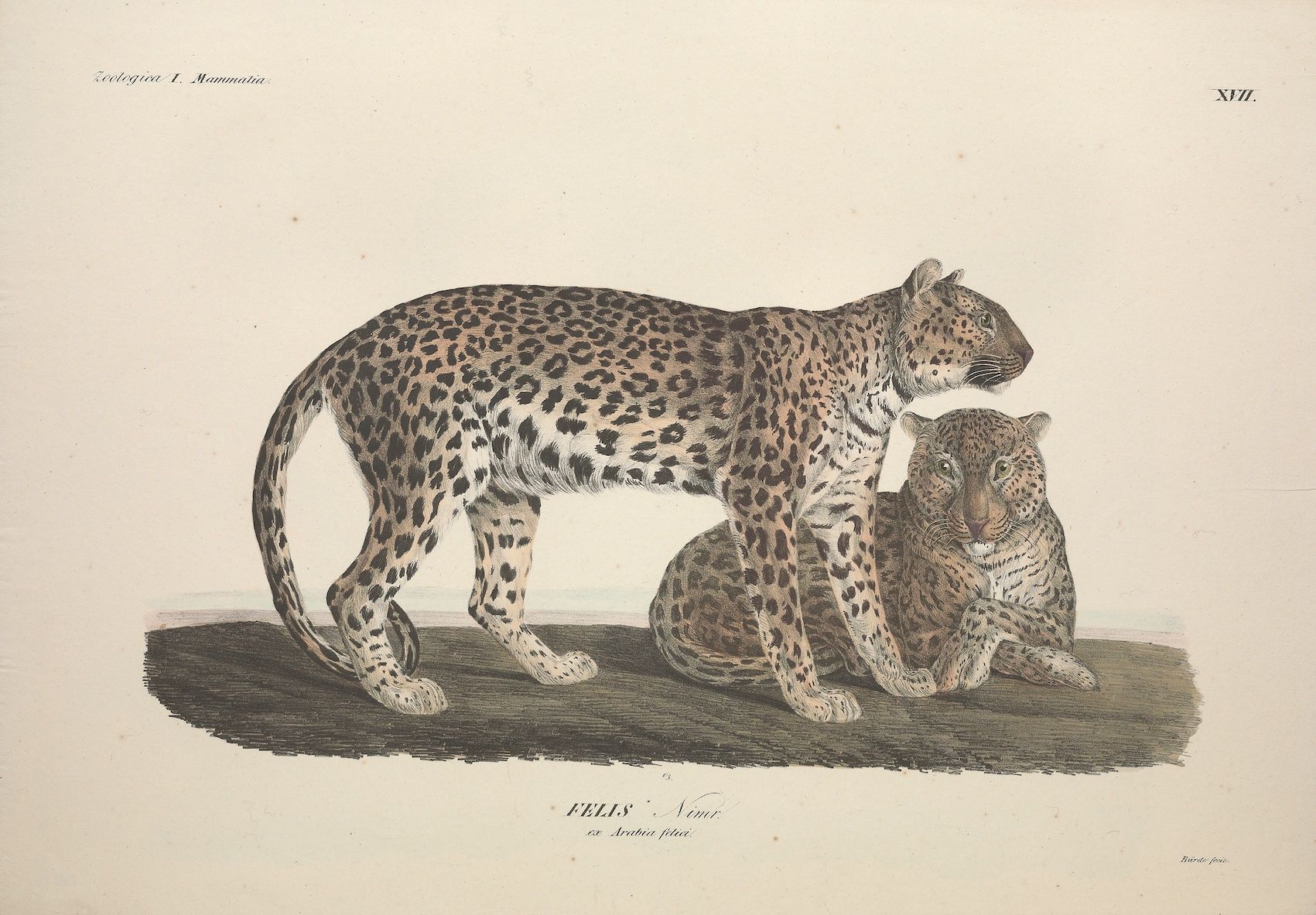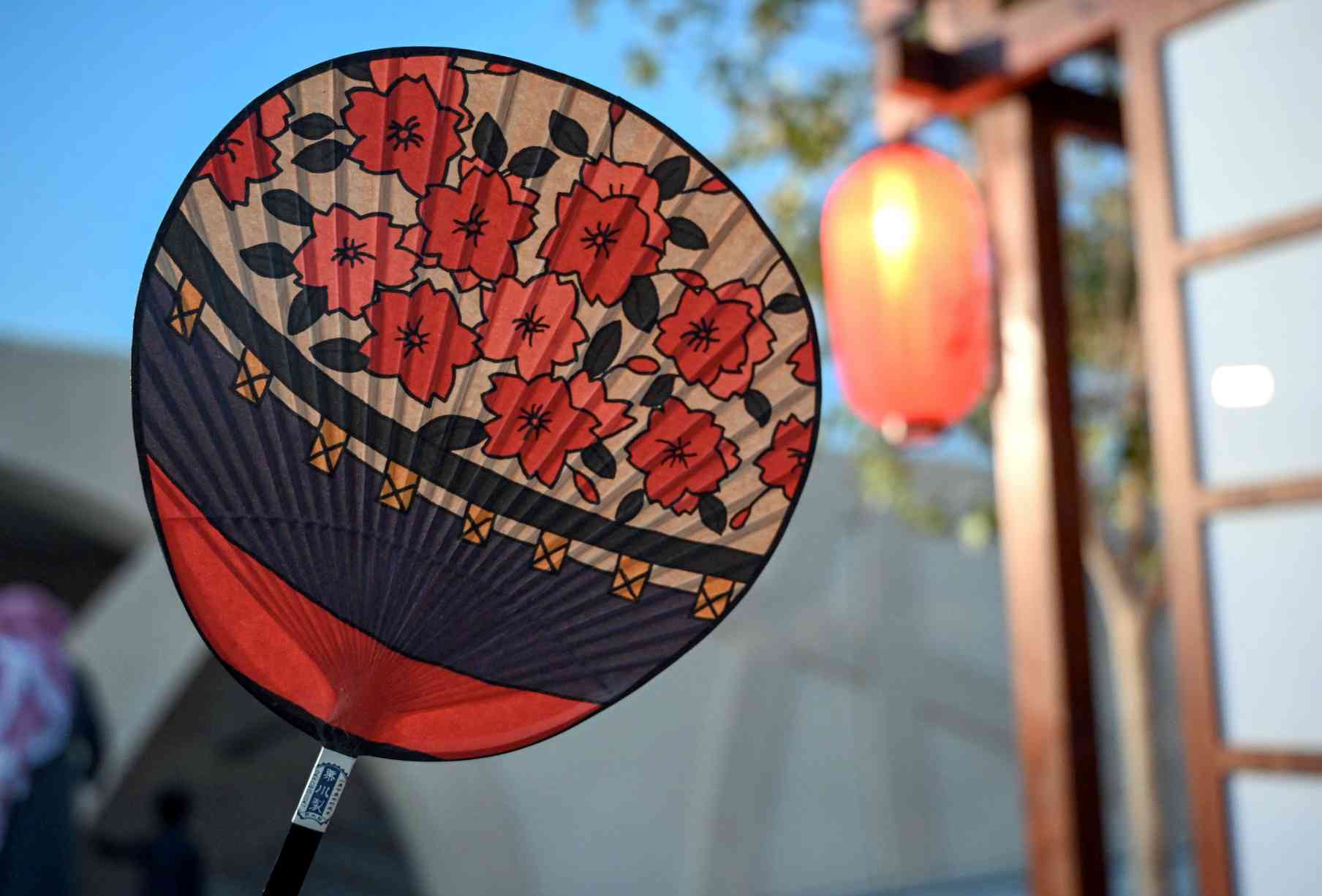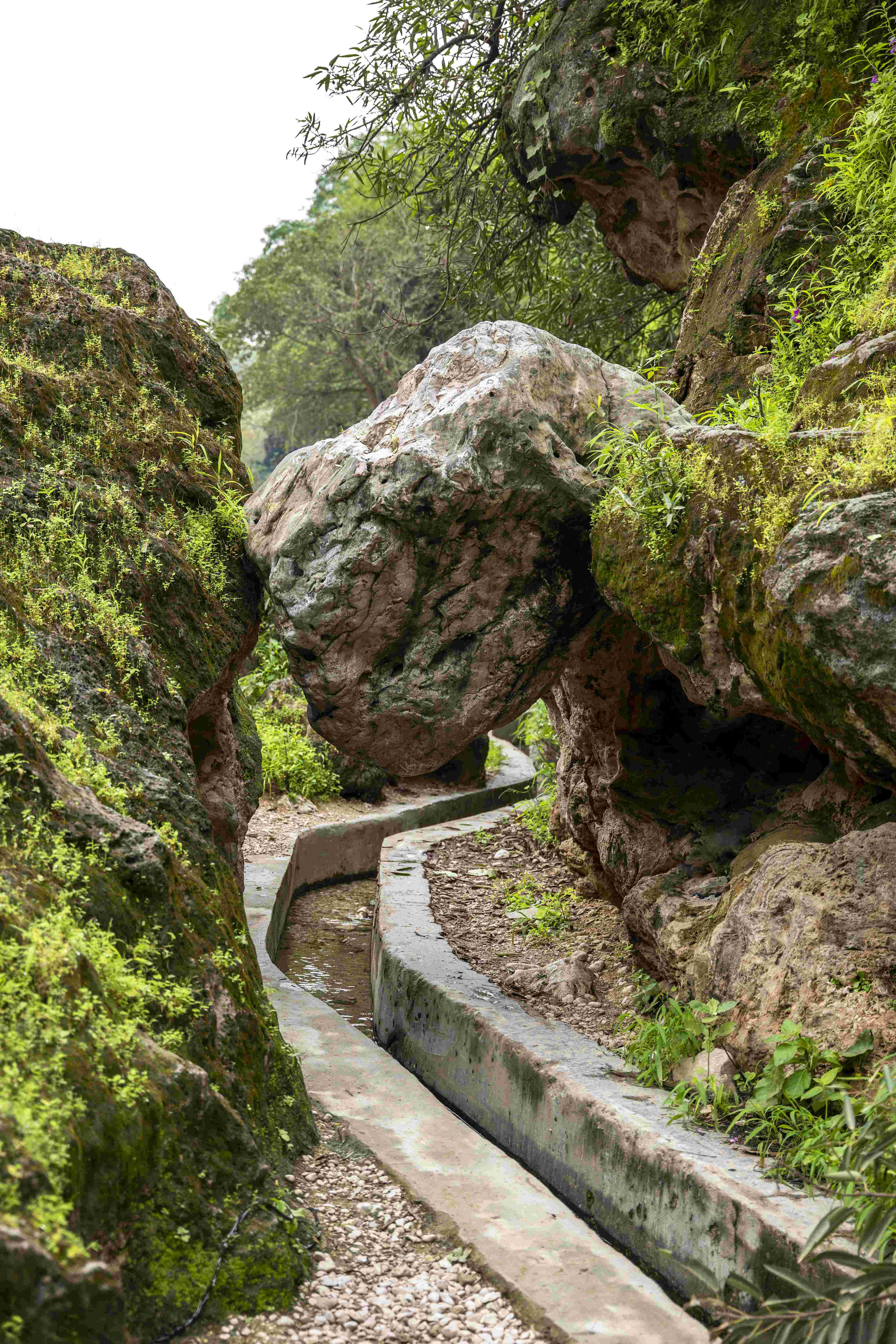Golden Threads of Nature
Water Seeks the Thirsty, 2020-2021.
Aisha Khalid — Ithra art collection. Fabric, steel pins, 24 karat gold-plated steel pins, and audio 304.8 x 548.64 cm.
Reimagining and reinterpreting nature in artworks remains one of the most intimate and rewarding relationships an artist can form with nature. Whether to inspire serenity, reflection or awe, there is always something in nature we can honor, even sometimes with its precious metals. Nature continues to be our greatest treasure, and here we feature intricate art from the Ithra collection, shaped by nature’s various gifts.
Inspired by the sacred sites of Saudi Arabia, Aisha Khalid's project reflects her deep spiritual connection to places like the Ka'ba, the Prophet's Masjid, and Zamzam Well. For Khalid, commissioned works offer an opportunity to engage intimately with the cultural significance of such places. This tapestry, crafted from layers of lush velvet and adorned with steel and gold-plated pins, embodies her vision of these revered spaces. The rich textures and colors - black, green and blue - evoke the profound emotions tied to these holy sites, celebrating the beauty of traditional craftsmanship and its ability to convey deep spiritual narratives.

Different angels of the art piece: Water Seeks the Thirsty, 2020-2021.
Aisha Khalid — Ithra art collection. Fabric, steel pins, 24 karat gold-plated steel pins, 304.8 x 548.64 cm.

Close ups from the art piece: Water Seeks the Thirsty, 2020-2021
Aisha Khalid- Ithra art collection
Fabric, steel pins, 24 karat gold-plated steel pins, 304.8 x 548.64 cm

Close ups from the art piece: Water Seeks the Thirsty, 2020-2021.
Aisha Khalid — Ithra art collection. Fabric, steel pins, 24 karat gold-plated steel pins, 304.8 x 548.64 cm.
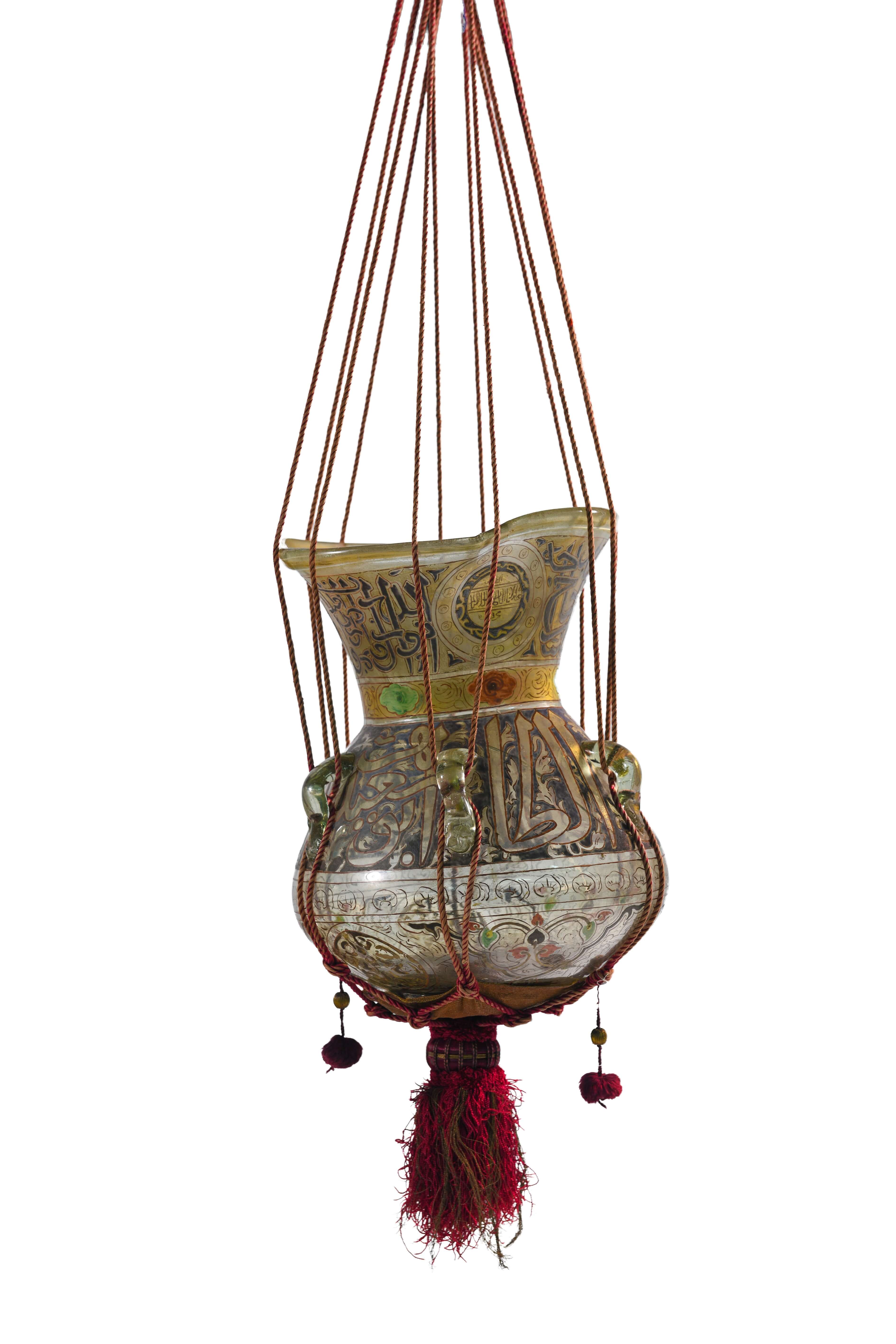
Mosque lamp Possibly Egypt, 13th/19th century Blown, enameled and gilded glass lamp: h. 35; suspension ball: h. 17; total: 110 cm King Abdulaziz Center for World Culture — Ithra, Dhahran.
Here, this intricate lamp was one of the objects exhibited. Dedicated lamp keepers were in charge of lighting, extinguishing, and cleaning mosque lamps, as light was essential for both fajr (dawn) and ‘isha’ (night) prayers. This lamp would have been suspended from the ceiling with a glass saucer or tube inside to hold the oil or wick. The names inscribed on the lamp refer to an 8th/14th-century donor, suggesting that this lamp was made to replace an earlier original which was broken. It also quotes from chapter Al-Nur (24:35) of the Holy Qur’an.
“Ithra’s exhibit examined the waqf as it applies to the running and maintenance of the mosque which sits at the heart of Islamic community and civilization. In particularly it displays a range of items once housed in mosques across the Muslim world and examines them in relation to waqf ledgers detailing the expenditures of the famous mosques which contained schools, libraries, fountains and a khanqah, a form of meeting house,” said Idries Trevathan, the Curator of Islamic Art and Culture at Ithra.
Light is life, and life is light.
As part of the second edition of the Islamic Arts Biennale that is taking place from January 25 to May 25, 2025 in Jeddah, Saudi Arabia, The King Abdulaziz Center for World Culture (Ithra) showcased six Islamic artifacts, each with its own story and history.
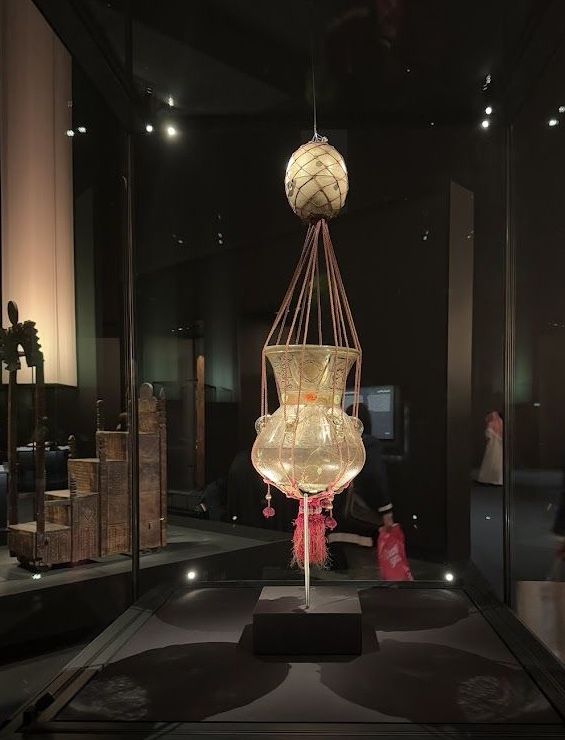
Mosque lamp Possibly Egypt, 13th/19th century Blown, enameled and gilded glass lamp: h. 35; suspension ball: h. 17; total: 110 cm King Abdulaziz Center for World Culture–Ithra, Dhahran.
“In its simplest form, a waqf refers to an inalienable endowment under Islamic law. It typically involves donating a building, a piece of land or an object for Muslim religious or charitable purposes. The donation cannot be revoked, even by the donor. And cannot be changed, even many years after the donor’s death. Waqf is an act of socioeconomic solidarity in the community realizing balance and inclusion, be it providing aid, development and elevation on all levels, benefiting both rich and poor,” he said.
To discover more of Ithra’s collection, please visit Ithra Museum.
